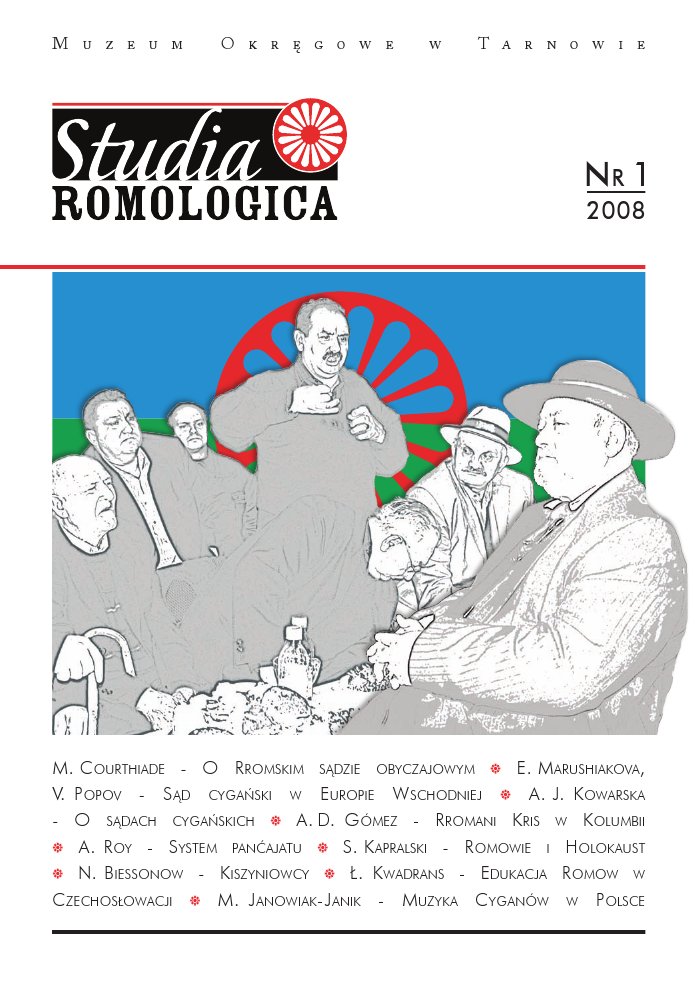O romskim sądzie obyczajowym
The traditional Romani court
Author(s): Marcel CourthiadeSubject(s): Social Sciences, Law, Constitution, Jurisprudence, Sociology, Ethnic Minorities Studies
Published by: Muzeum Okręgowe w Tarnowie
Keywords: Roma; tradition; traditional court; Romani kris
Summary/Abstract: In a short discussion about the existing judiciaries, the article points at just how diverse and relative they are when observed in a wider perspective. The paper then attempts to explain how and why the Rromani kris is, one might say, secret and to make clear its nature and main features. After explaining when, where and how Rroms convene a kris and how this act strengthens Rromani identity, it brings to light some 20 differences between Rromani and non-Rromani judiciaries: stating among others, that the Rromani system focuses more on mediation and harmony among Rroms, rather than on punishment as non-Rromani ones do which often leads to more or less hidden injustices and resentment in the name of justice. The article goes on to draw further parallels with other customary courts of justice, such as the pancajat raj in India and the ihtiyar hejet in Turkey, however, their function appears to be broader than the Rromani kris. Romania officially recognizes the Rromani kris and its authority as a 'constitutive institution of the State' (albeit, this has given rise to polemics in the country itself) and such recognition of the kris is expected to be adopted in Columbia very soon. The Rromani kris raises many philosophical questions related to policy and true democracy nowadays.
Journal: Studia Romologica
- Issue Year: 1/2008
- Issue No: 1
- Page Range: 13-32
- Page Count: 20
- Language: English, Polish, Romany

